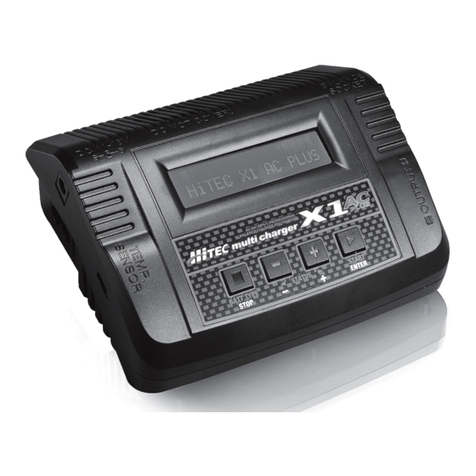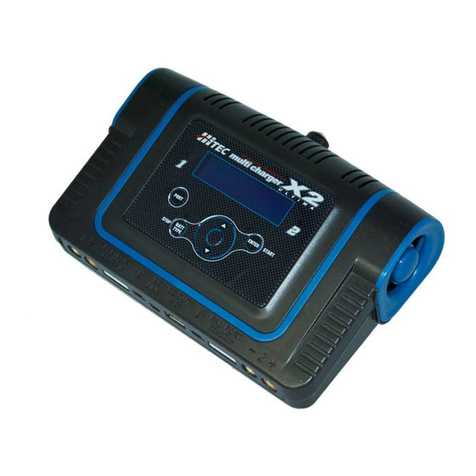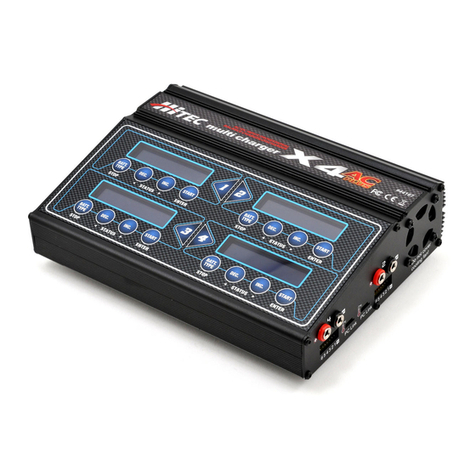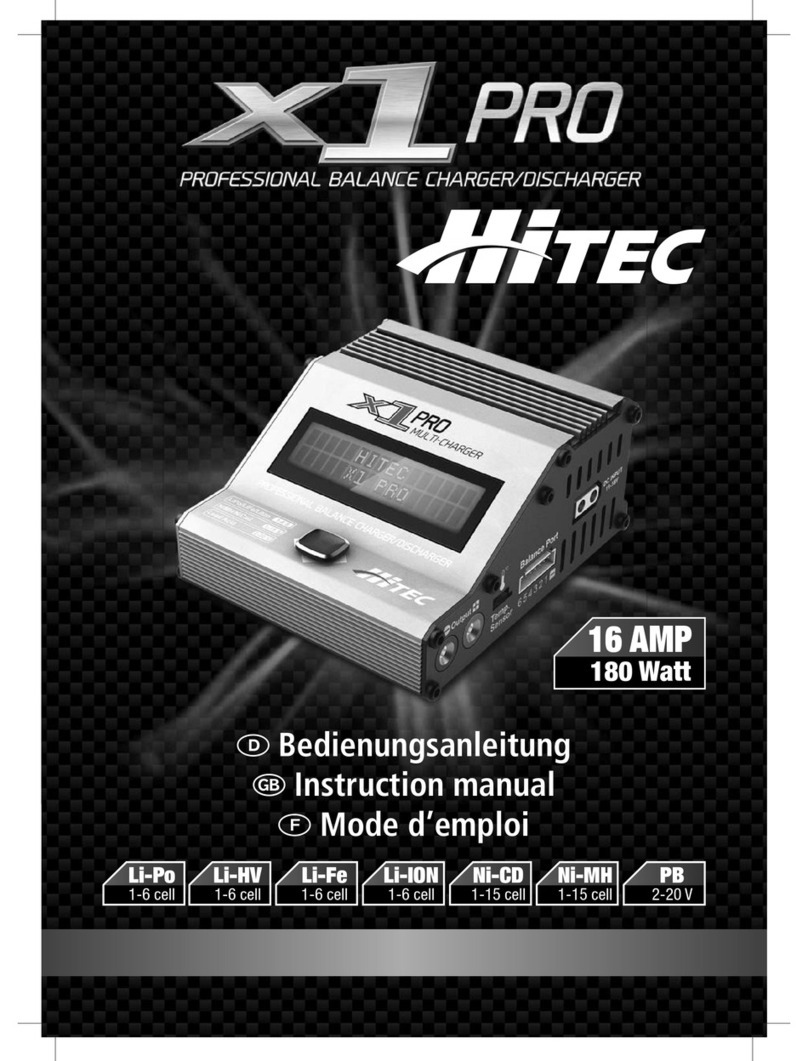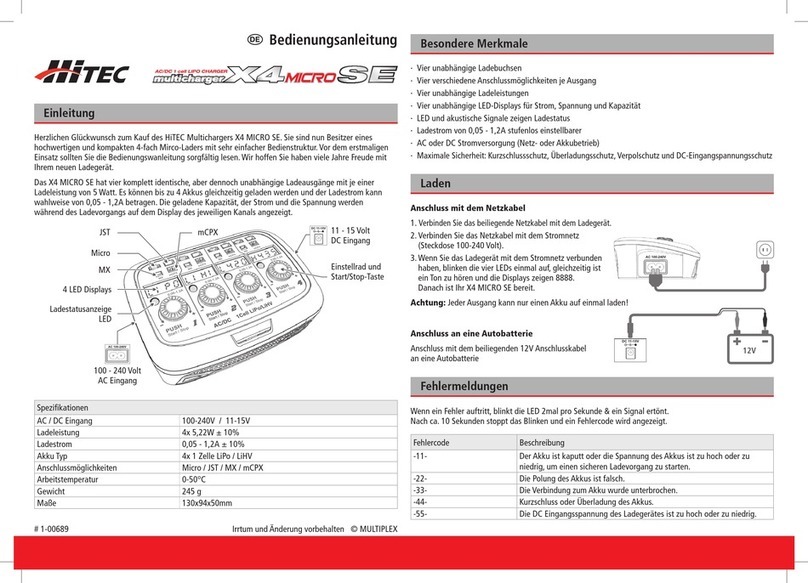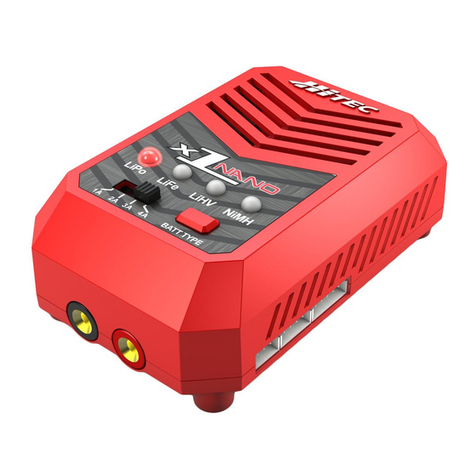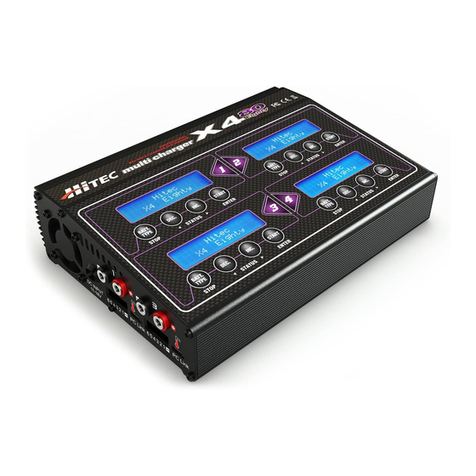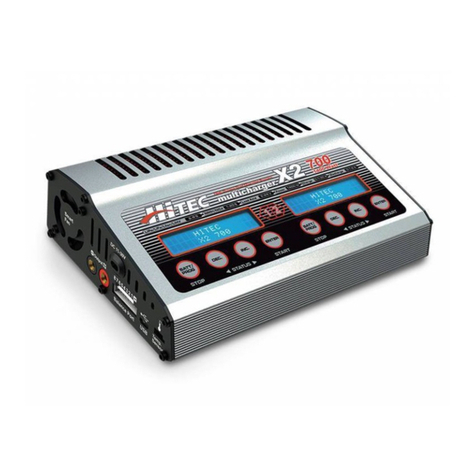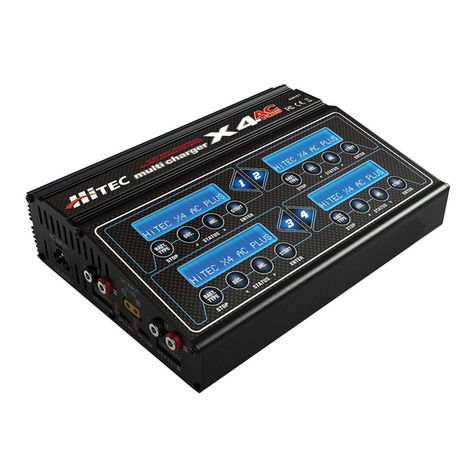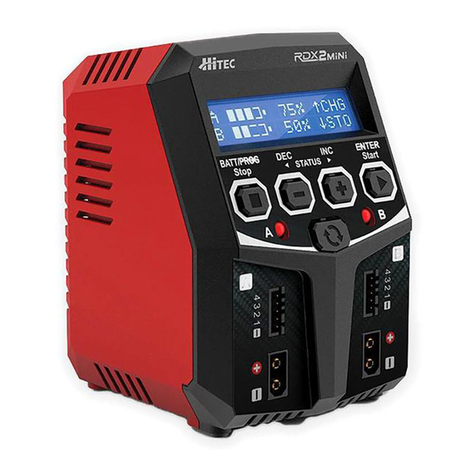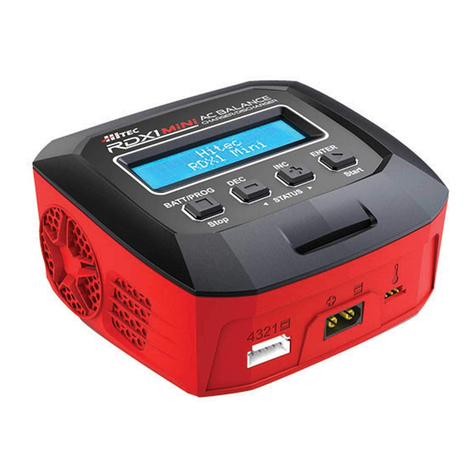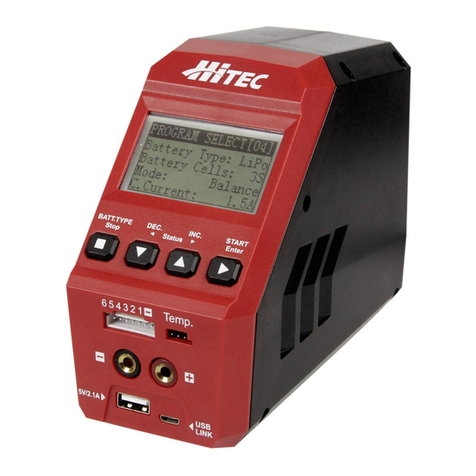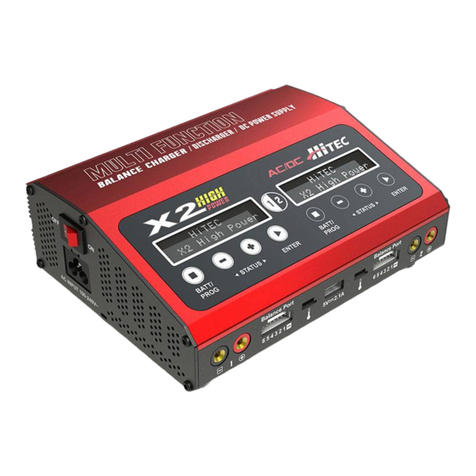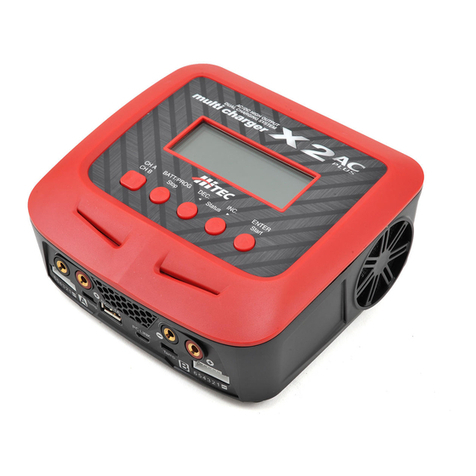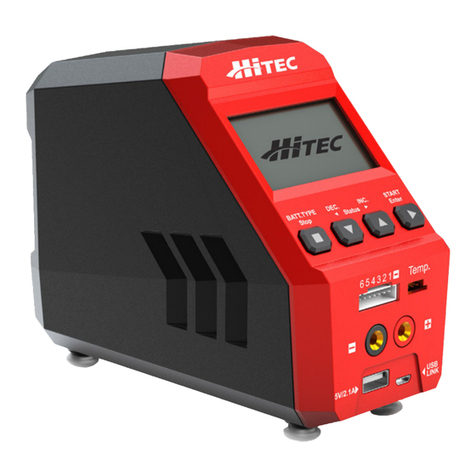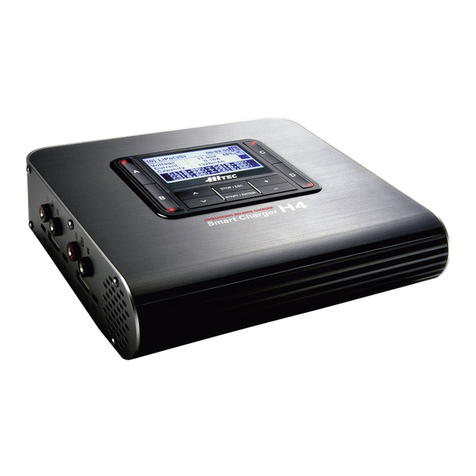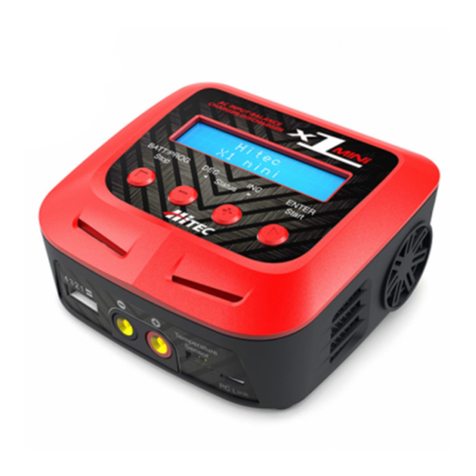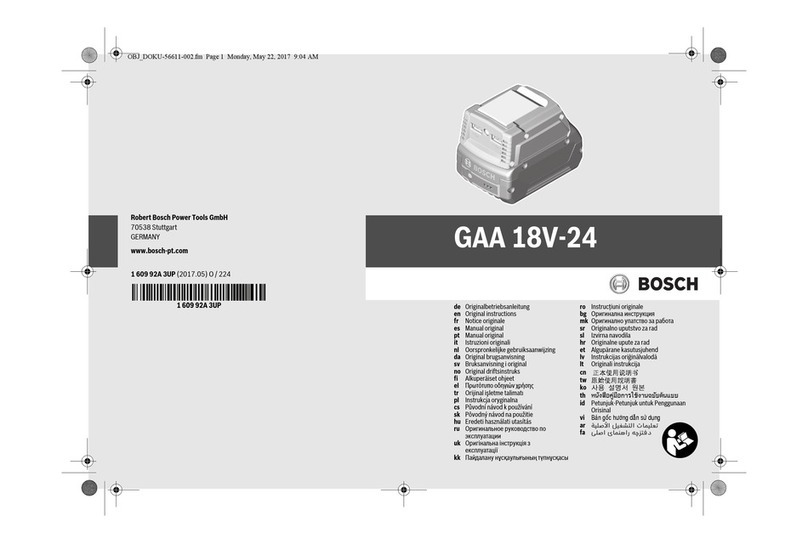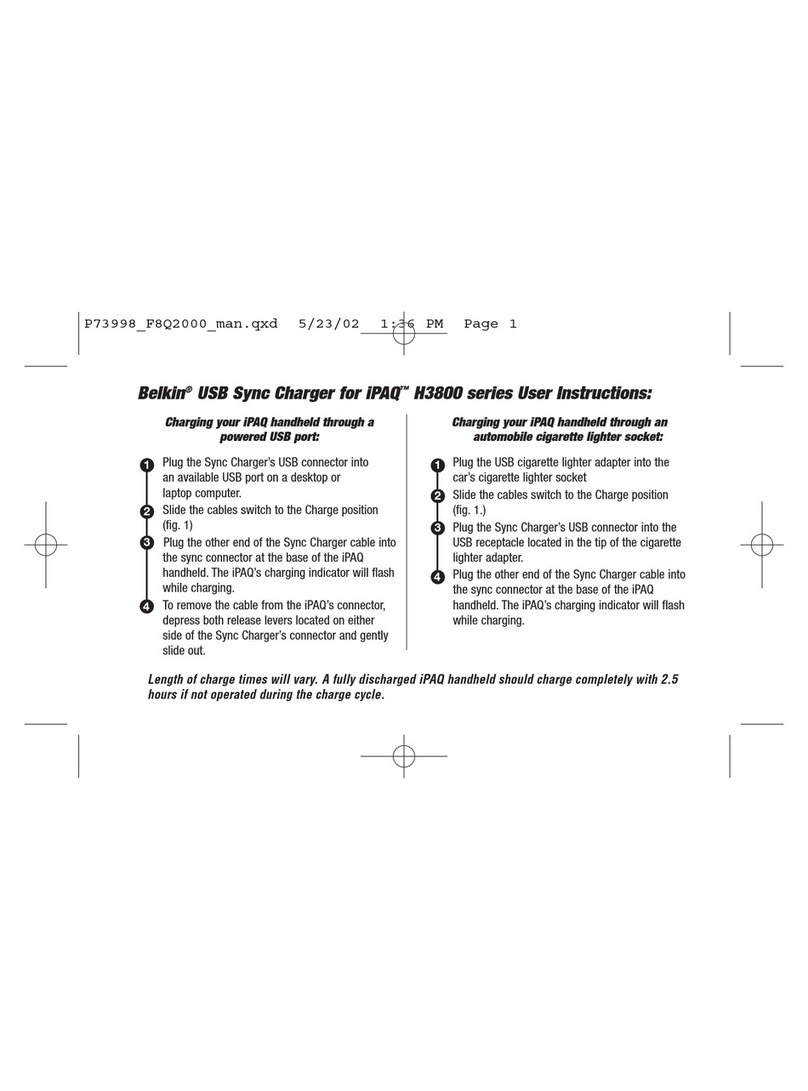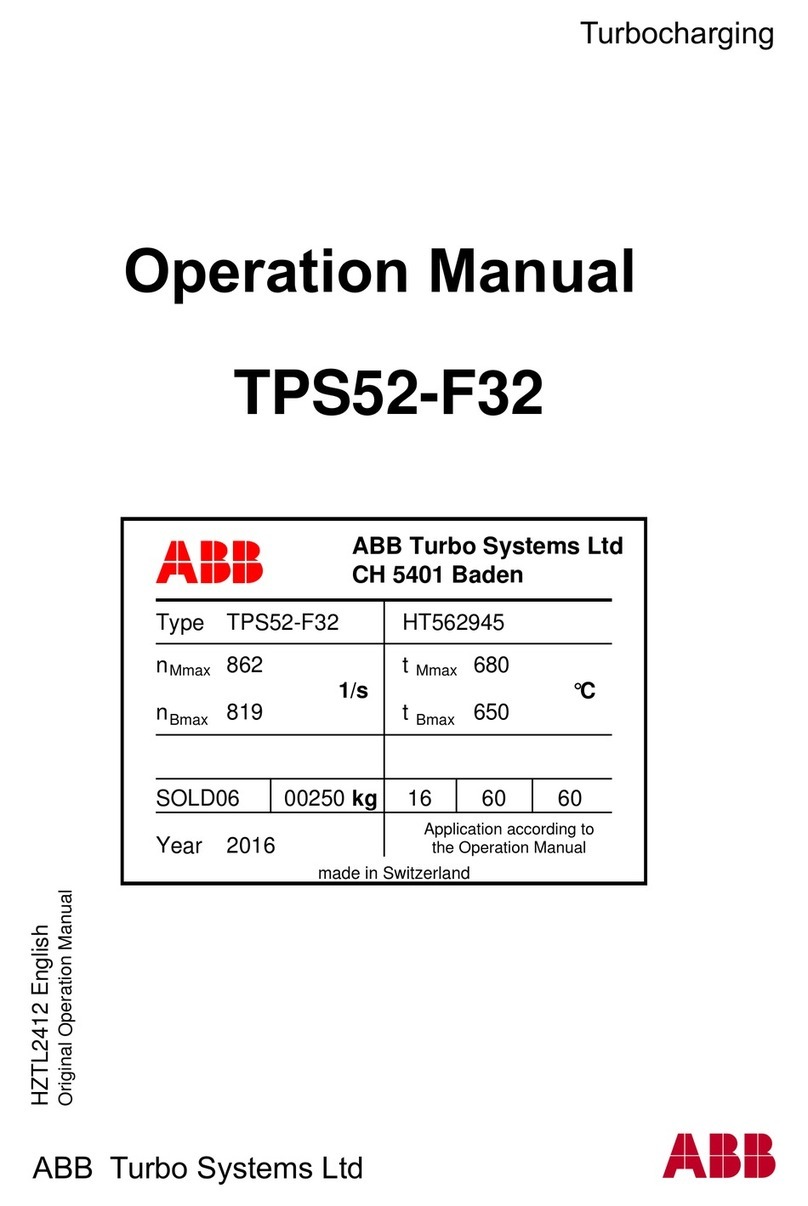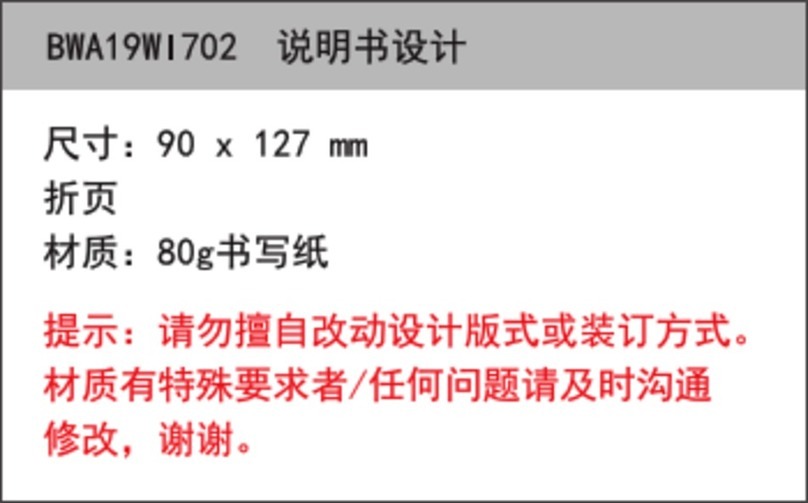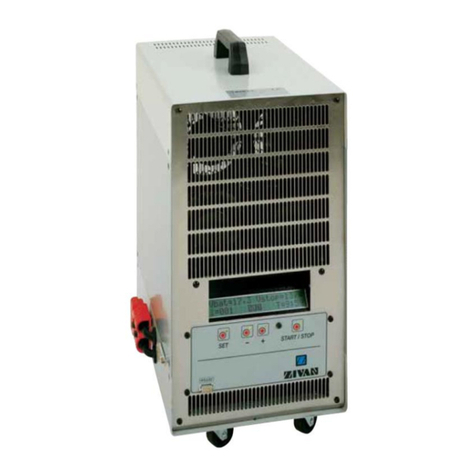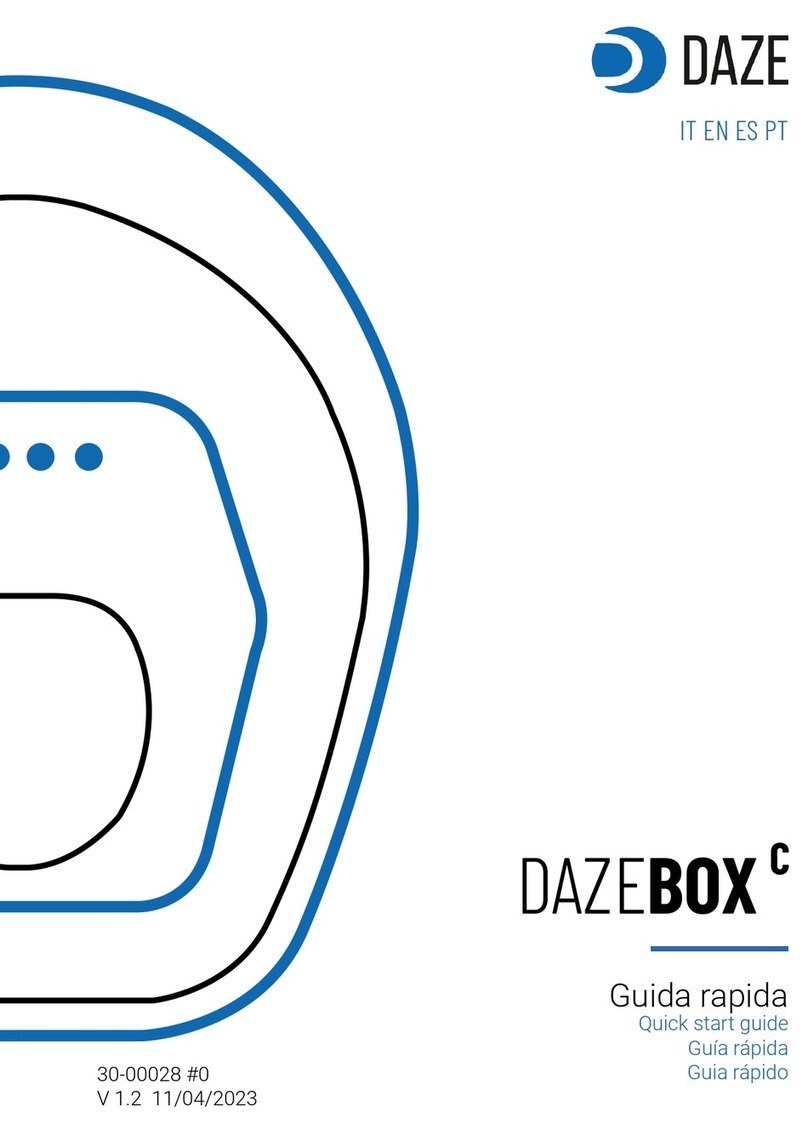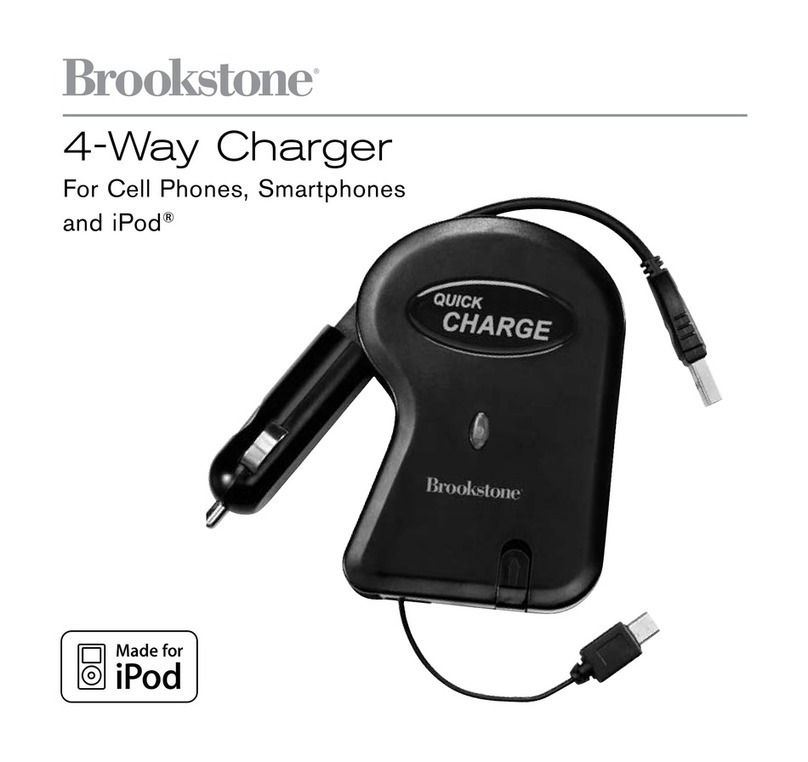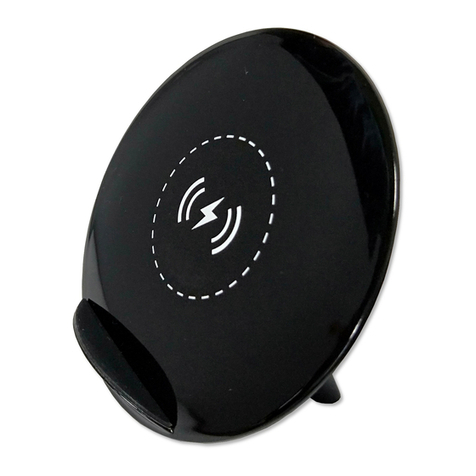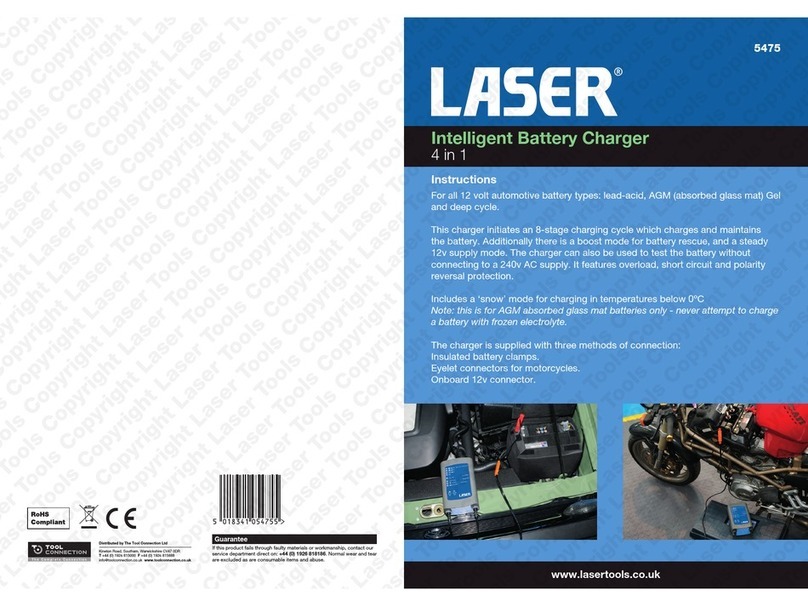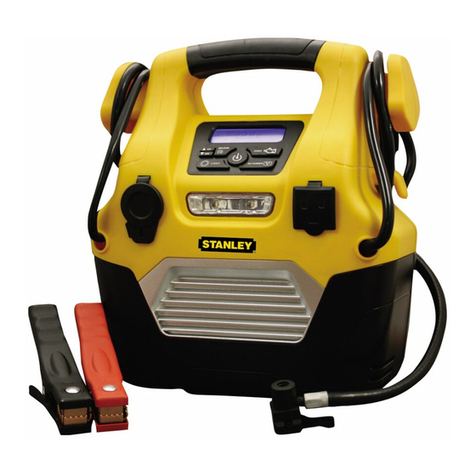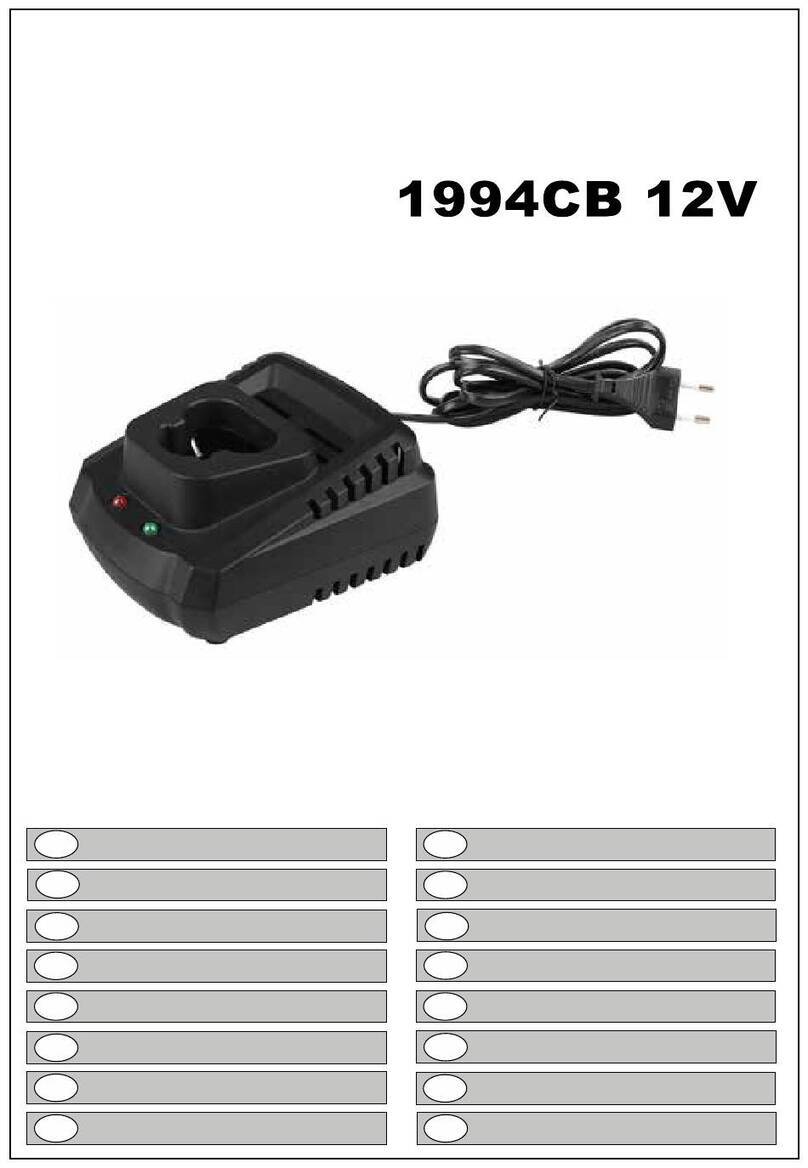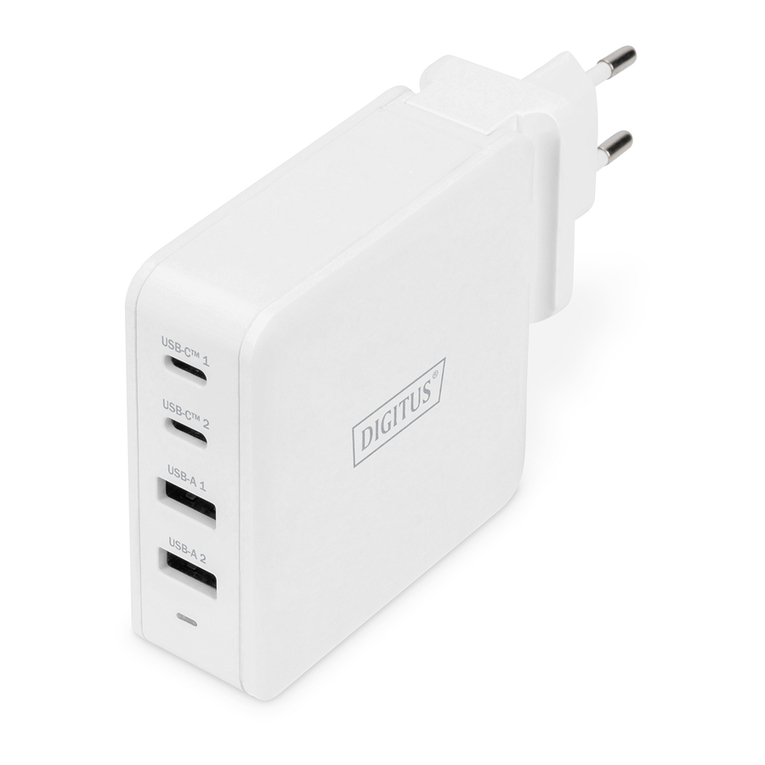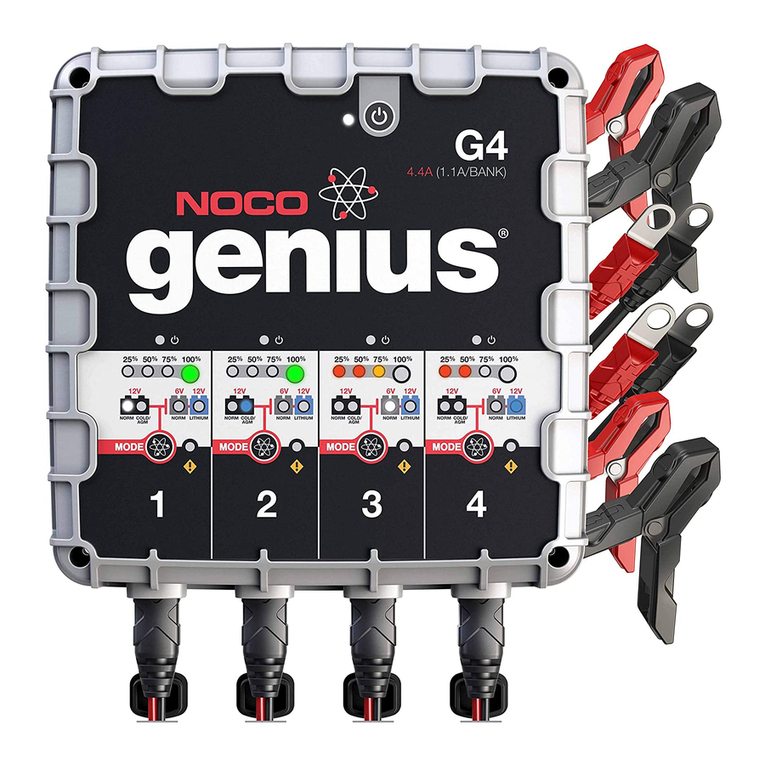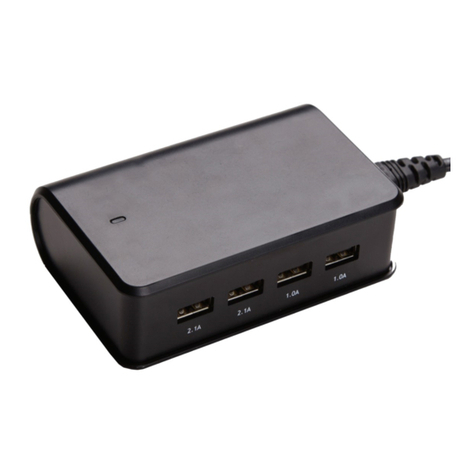
6
LiPo LiPo HV LiIon LiFe NiCd NiMH Pb
Nominal
Voltage
3.7V/cell 3.7V/cell 3.6V/cell 3.3V/cell 1.2V/cell 1.2V/cell 2.0V/cell
Max. Charge
Voltage
4.2V/cell 4.35V/cell 4.1V/cell 3.6V/cell 1.5V/cell 1.5V/cell 2.46V/cell
Storage
Voltage
3.8V/cell 3.85V/cell 3.7V/cell 3.3V/cell n/a n/a n/a
Allowable Fast
Charge
≤ 1C ≤ 1C ≤ 1C ≤ 4C ≤ 1-2C ≤ 1-2C ≤ .04C
Min. Discharge
Voltage
3.0-3.3V/cell 3.1-3.4V/cell 2.9-3.2V/cell 2.6-2.9V/cell 0.1-1.1V/cell 0.1-1.1V/cell 1.8V/cell
Standard Battery Parameters
WHEN ADJUSTING YOUR RDX1 MINI CHARGING PARAMETERS, BE SURE
YOU SELECT THE PROPER BATTERYTYPE AND CELLVOLTAGE FOR THE TYPE
OF CELL YOU ARE CHARGING. CHARGING BATTERIES WITHTHE WRONG
SETTINGS MAY CAUSE THE CELLS TO BURST, CATCH FIRE OR EXPLODE.
Charging
Before charging your batteries, it is critical that you determine the maximum
allowable charge rate for your batteries. The RDX1 Mini is capable of charging
at high rates that may not be suitable or safe for your particular batteries. For
example, Lithium cells are typically safe to charge at 1C, or the total mAh÷1000.
A 1200mAh battery would have a 1C charge rate of 1.2 amps. A 4200mAh
battery would have a 1C charge rate of 4.2 amps. Some manufacturers are
oering Lithium cells that can be charged at greater than 1C but this should
ALWAYS be veried before charging a Lithium battery at rates higher than 1C.
Voltage is just as critical as the charging amperage rate and this is determined
by the number of cells in series, or“S”. For example, a 3S LiPo is rated at 11.1 volts
(“S”multiplied by a single LiPo cell with a nominal voltage of 3.7 volts DC. 3 cells
x 3.7 volts each equals 11.1 volts DC).
Connect the battery’s main leads to the charger output: red is positive and
black is negative. Keep in mind that the gauge or thickness of your charging
leads from the RDX1 Mini to your battery must be of an acceptable current
rating to handle the applied charge current. For maximum safety and charging
eectiveness, always match or exceed the main battery lead rating when
assembling or selecting your charging leads. If you charge a battery at a high
current rate (amperage) with a charging lead not rated for the chosen amperage,
the wire could get hot, catch re, short out and/or potentially destroy your
battery and the charger.
Warning
Warning and Safety Notes [cont.]





















